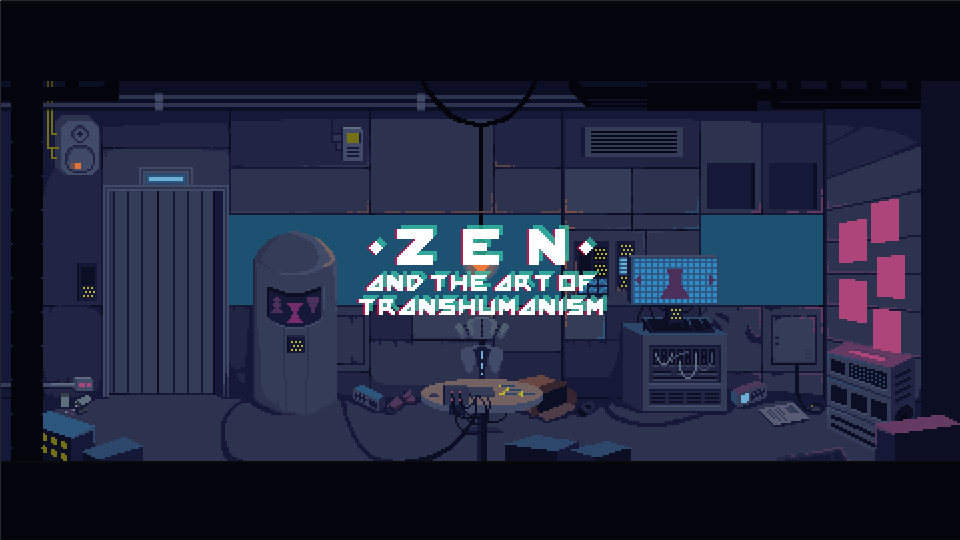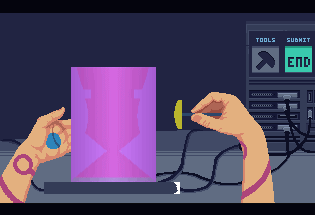Aping the naming convention of Robert Pirsig's popular feel-good armchair sophistry tome Zen and the Art of Motorcycle Maintenance (1974), Deconstructeam's free-to-play game Zen and the art of Transhumanism (2016) burdens itself with the noble task of transliterating the complex topic of transhumanism to a zen-like meeting of mechanic and narrative. While beautiful and meditative, it’s small scope denies the player an opportunity to cogitate on the heady theme.
You play as Akara-184, or rather you, control Akara-184, a sort of techno-biologic fursona come alive tasked by a disembodied voice (referred to by Akara only as "master") to manufacture cybernetic upgrades for a queue of customers, each hoping to improve or replace some aspect of their person. I differentiate between be and control because the player is afforded only a slim degree of agency, it often feels more like you are guiding Akara than are Akara.
That slim degree of agency is afforded to the player in the option to choose which of several available upgrades the customer will receive. Upon hearing their specific needs, you can peruse a selection of templates, each with their own unique "effect" Perhaps your customer would best be suited with an upgrade to their physical strength, maybe the sublimation of their libido. After deciding the best fit (which is seldom the first one you think of), you are corralled into the game's core mechanic, a sort of pottery-wheel simulator that, while awkward at first, does mature quickly into a soothing ritual.
The pottery mechanic in action.
While on the topic of soothing, the art and music certainly demand mention. It would be a reach to call this game's style original, especially when it shares the same launch year as an instant classic like VA11 HALL-A, of which Zen certainly shares inspirational touch points too numerous to count (although if prodded I would start with titles like Another World, and Flashback). But it is certainly beautiful and possessed of a unique charm born of the conceit that while, yes, we are looking at another cyberpunk roomscape, it is through the eyes of an artisan, an oft-overlooked archetype in the genre. It were as if Blade Runner’s main character was the replicant animal maker we get to spend only a precious few moments with.
Sadly, the game ends before it ever really gets started. Just as you are developing a grasp of the process, it comes to an abrupt halt. While I concede there is only so much game to be made from the pottery mechanic, I would argue the true core of the game is the implant selection process. Ending it so quickly robs the player of the opportunity to ruminate on the implications of such severe personal modifications, which is what I feel the developers really wanted us to do. Hopefully they will follow this up with a more complete realization.

